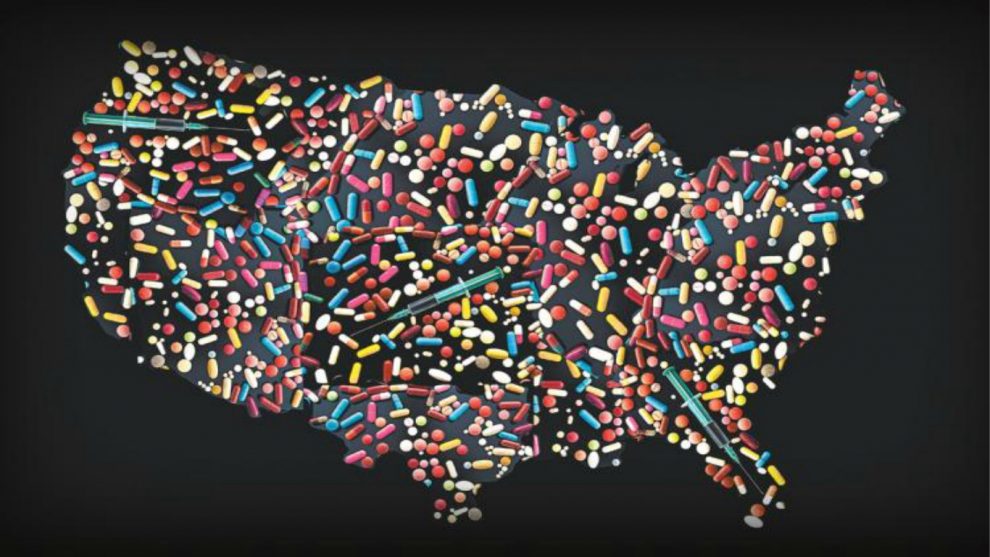Opioid deaths sharply rise in American communities where multinational automakers have closed their United States plants and outsourced those jobs to foreign countries, the latest medical study confirms.
The study by acclaimed researchers, published in JAMA Internal Medicine, notes that American communities that experienced an auto plant closure within the last five years saw a much greater rate of opioid deaths than communities whose auto plants have remained open — confirming that towns and small cities that have been hit by job-killing free trade have suffered more in the opioid crisis.
Opioid deaths sharply rise in American communities where multinational automakers have closed their United States plants and outsourced those jobs to foreign countries, the latest medical study confirms.
Trump administration touts ‘most secure border in history’ as 2.5 million migrants exit US
DOJ’s Epstein disclosure draws fire for website glitches, missing documents, redactions
Here is what‘s in the Department of Justice’s latest Epstein files drop
Bill Gates Pictured with Females in New Epstein Files Photo Release
New Epstein files reveal photos of Bill Clinton posing with unidentified women
Just In: Epstein File Dump Features Bill Clinton Next to Redacted ‘Victims and/or Minors’ in Multiple Pics
White House pressures Smithsonian for internal records, warns funding could be withheld: report
Brown University, MIT shooting suspect likely died days before body found: autopsy
BREAKING: US Launches Strikes on Syria in Response to Killing of 2 American Soldiers
Christian Media Company Moves Into Gaming with Interactive Bible-Focused Video Game
Fox News Politics Newsletter: Trump admin targets Maduro’s inner circle, family
Fox News Poll: Views on the year ending are merriest since 2020
Veteran Aussie Cop’s Shot Targeting Hannukah Mass Murderer Being Called ‘Once in a Lifetime’ Takedown, But Was It?
Cynthia Lummis becomes 11th senator to walk away from upper chamber in 2026
Fox News True Crime Newsletter: Brown and MIT shooting suspect, Nick Reiner’s lawyer, Brian Walshe’s sentence
The study by acclaimed researchers, published in JAMA Internal Medicine, notes that American communities that experienced an auto plant closure within the last five years saw a much greater rate of opioid deaths than communities whose auto plants have remained open — confirming that towns and small cities that have been hit by job-killing free trade have suffered more in the opioid crisis.
The researchers note:
US manufacturing counties that experienced an automotive assembly plant closure were compared with counties in which automotive plants remained open from 1999 to 2016. Automotive assembly plant closures were associated with a statistically significant increase in county-level opioid overdose mortality rates among adults aged 18 to 65 years. [Emphasis added]
The study’s findings reveal that five years after a community’s auto plant closed, opioid deaths increased by 85 percent compared to communities whose auto plants have not closed.
Non-Hispanic white men, ages 18 to 34, are the hardest hit by the opioid crisis in these communities that have suffered an economic downturn due to outsourced auto manufacturing. Non-Hispanic white men from 35 to 65-years-old also are at a much greater risk of opioid death in these towns than other demographic groups, the study discovered.
Overall, the study looked at 112 American counties near auto plants from 1999 to 2016. About 28 of these counties experienced an auto plant closure in that time frame — a direct result of China’s entering the World Trade Organization (WTO) and the enactment of the North American Free Trade Agreement (NAFTA).
Trump administration touts ‘most secure border in history’ as 2.5 million migrants exit US
DOJ’s Epstein disclosure draws fire for website glitches, missing documents, redactions
Here is what‘s in the Department of Justice’s latest Epstein files drop
Bill Gates Pictured with Females in New Epstein Files Photo Release
New Epstein files reveal photos of Bill Clinton posing with unidentified women
Just In: Epstein File Dump Features Bill Clinton Next to Redacted ‘Victims and/or Minors’ in Multiple Pics
White House pressures Smithsonian for internal records, warns funding could be withheld: report
Brown University, MIT shooting suspect likely died days before body found: autopsy
BREAKING: US Launches Strikes on Syria in Response to Killing of 2 American Soldiers
Christian Media Company Moves Into Gaming with Interactive Bible-Focused Video Game
Fox News Politics Newsletter: Trump admin targets Maduro’s inner circle, family
Fox News Poll: Views on the year ending are merriest since 2020
Veteran Aussie Cop’s Shot Targeting Hannukah Mass Murderer Being Called ‘Once in a Lifetime’ Takedown, But Was It?
Cynthia Lummis becomes 11th senator to walk away from upper chamber in 2026
Fox News True Crime Newsletter: Brown and MIT shooting suspect, Nick Reiner’s lawyer, Brian Walshe’s sentence
The study comes as automakers like General Motors (GM) have idled plants in Lordstown, Ohio and laid off American workers in Detroit, Michigan. Thousands of Americans who worked for GM have been laid off in the process as the corporation continues closing four of its U.S. plants.
As Breitbart News has reported, the opioid crisis continues to most significantly take the lives of young white Americans between 25 to 34-years-old living in suburbs. In 2017, young white Americans in suburbs had the highest rate of opioid deaths compared to all demographic groups — the second consecutive year this has occurred.
Last year, the Immigration and Customs Enforcement (ICE) agency seized enough fentanyl to kill nearly twice the U.S. population. For the first time, Americans are now more likely to die from an accidental opioid overdose than from injuries in a car crash.
Drug overdoses in 2017 killed an unprecedented 72,287 U.S. residents, nearly three times the number of individuals killed by global terrorism and 10,000 more than the number of Americans killed in the Vietnam War. Nearly 50,000 of those deadly overdoses were caused by either heroin or fentanyl.
Story cited here.
























